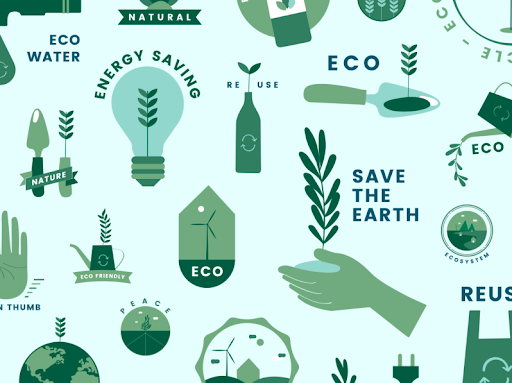8 Eco Friendly Habits You Must Try
January 15, 2022
Science has shown that the environment has been depleting in recent years due to human activities. Human behavior has risked the quality of our atmosphere, water, animal health, and our own health. Here are some habits you can adopt to help protect the environment.
So much water is wasted while we wait for the water in the shower to warm up. One “must-try” habit is collecting shower water while it warms up, then watering your plants with it. This can not only save our limited water resource, but it also can save money. Studies show that if you save 1000 gallons of water a month, you can cut $140 a year from your water bill. Simply place a bucket under your shower faucet until it is warm, and water your plants!
Photo by Kay Plumbing from “Why Saving Water is Important”
Another way to protect Earth’s resources is by limiting the number of times you wash your clothes. Conservationists suggest doing less loads of laundry, usually once a week, to ensure less usage of water. Larger loads of laundry are proven to save gallons of water a year. On top of that, water efficient washing machines can save up to 6,000 gallons of water a year. Also, the best way to dry your clothes sustainably is to hang dry them, which uses less energy.
Another habit to obtain is placing a recycle bin next to the trash can in your home, so everyone can easily recycle. Recycling helps reduce plastic pollution which contaminates oceans and animal habitats: This endangers animal and human health due to microplastics. Recycling is important to the health of our Planet’s future. Small bins can be easily purchased at local home stores like Target, Lowes, Walmart, and Home Depot.
Photo by CK-12 Conservation Book
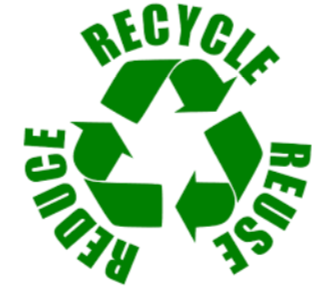
The next tip for a sustainable lifestyle is reducing disposable product use. Billions of people in the world are using one time use items, and are destroying the environment. A single person will use about 300 pounds of single use plastics a year. If we can work together, and use reusable products, we can prevent all kinds of harmful consequences. Some of which is overflowing landfills, polluting waterways, and contaminating our drinking water. Reusable mugs, tumblers, and cups can be purchased under $15. Sixteen billion disposable coffee cups are being used each year, so one can imagine the harmful toll that has on the planet.
The fifth habit suggested to put into practice is growing or buying natural food, in lieu of GMO prepackaged food. Many food packaging plastics are not biodegradable or recyclable, which further causes landfill issues and higher risk of endangering sea life from accidental plastic consumption. Not only is the plastic packaging awful for the environment, but scientists have found that BPAs and harmful chemicals found in the plastic seep into the food, causing health issues in some people. Genetically modified food (GMO) is proven to degrade soil health and risk the future for agriculture. For more information on soil health and GMO effects visit the website Engineering An Environmental Disaster.
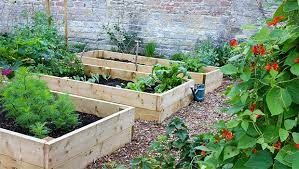
One of the most important habits to adopt is not wasting food. This is an essential habit with many benefits. Wasting food is not only morally wrong, seeing as there are billions of people starving all over the world. It is also terrible for the environment. First, we are overflowing landfills with tons of wasted food. Then, we are demanding more food in return which puts stress on agriculture’s food yield. By wasting food in landfills, we are increasing methane outputs 25 times more than carbon dioxide emissions. In essence, we must be resourceful and finish our plates and also buy what we need in moderation, so we do not waste anything. You can make a difference by ordering smaller dishes and finishing it, rather than throwing it away.
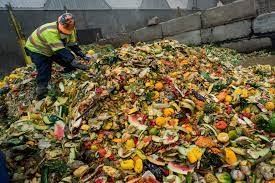
Another tip is going vegan or vegetarian, or reducing meat consumption. This can not only help with your health, but the environment. Eating plant based foods can greatly decrease the amount of carbon dioxide and methane released into the atmosphere. Hence, reducing the rate of global warming. It also will help with saving forests. On average 6.7 million acres of trees are cut down to raise cattle and this is incredibly detrimental to air and soil health. Cutting down billions of trees for livestock also destroys countless habitats. Native forest species lose their habitats which decreases biodiversity, ultimately breaking down the food chain. Clearly, this simple lifestyle change can greatly change the future of our planet.
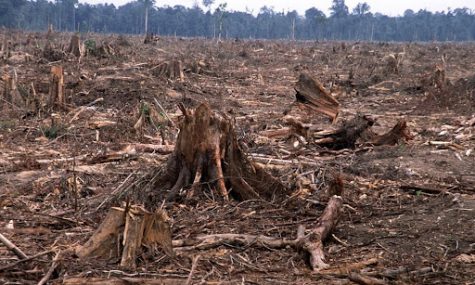
Illegal logging for paper industry and forest clearing for Palm oil plantation. TESSO NILO Plantation Riau, Sumatra, Indonesia
The last tip is to thrift clothes, and buy less clothes that are not needed. Most Americans succumb to fast fashion. Fast fashion is inexpensive clothing produced rapidly by mass-market retailers in response to the latest trends. The problem with this is that billions of people are getting cheap polluting clothes that have great amounts of greenhouse gas emissions. Then they dispose of them improperly. About 85% of clothes end up in landfills, which is incredibly wasteful. Thrifting is a great alternative to buying new clothes, because there are millions of tons of discarded clothes that can be reused. Not only does thrifting reduce greenhouse gas emissions, energy usage, and chemicals, but it is very cheap. Thrifting is a great way to shop because you can find great pieces for less than half the original price. Who wouldn’t want to take advantage of this!
These eco-friendly habits all add up to secure the promise of a sustainable future. We can make small changes in our lifestyle to benefit the planet, and our own lives. We owe so much to the planet after the endless stress we have put on natural resources – the least we can do is make a few sacrifices for future generations. The planet’s health is in danger and it is up to us to take action and become more selfless and do something about this crisis. The environment’s future is in your hands. Are you going to do what you can to protect it?

